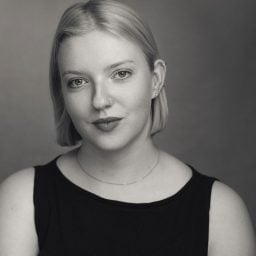Art World
Painting Bought for $2,700 Revealed to Be $390,000 Masterpiece
The buyer, David Taylor, saw the work in the corner of a Lincolnshire auction house in a “plastic 1960s frame”.
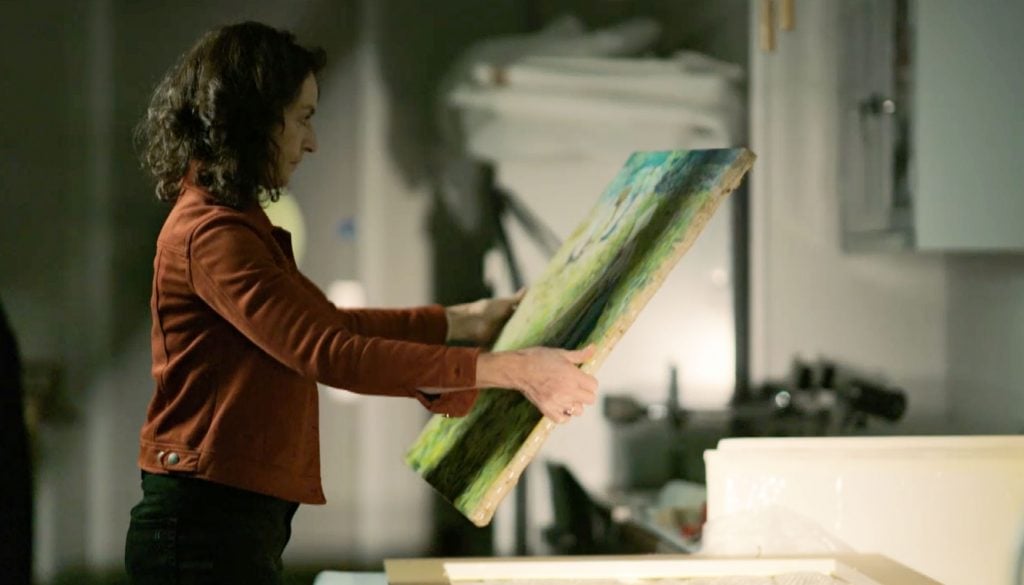
On October 3, experts on BBC’s Fake or Fortune gave one man some very, very good news. Television show hosts Fiona Bruce and Philip Mould pronounced that a Helen McNicoll painting that had been missing for over 100 years Taylor brought was in fact, the real deal.
Taylor, an artist and retired art dealer from Lincoln, brought in the harvest scene which he had purchased from a regional auction house, telling the Bruce and Mould that he had not had a catalogue for the auction, and instead spotted the work while “wandering around, saying it looked like it had been created by ‘someone who really knows what they’re doing.'” He was right.
Having purchased the work for a mere £2,090 ($2,700), Mould revealed at the start of the program that, should the work be genuine, Taylor could expect it to be worth £300,000 ($390,000).
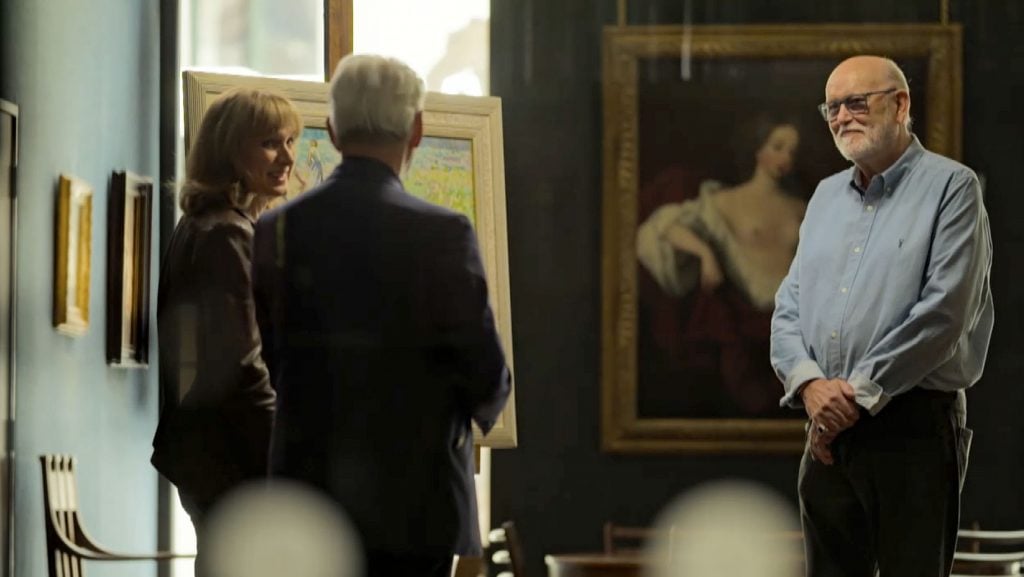
Fiona Bruce and Philip Mould preparing to tell the owner, David if his painting is a genuine Helen McNicoll. Courtesy of BBC Studios.
Helen McNicoll was born in 1879 to a wealthy industrialist family in Toronto. She became profoundly deaf as a young child after contracting scarlet fever, and learned to lipread. She studied at London’s Slade School of Fine Art and remained in London for the majority of her life— also living and painting in France. The artist passed away tragically young at 35 in Dorset in 1915 following complications from diabetes.
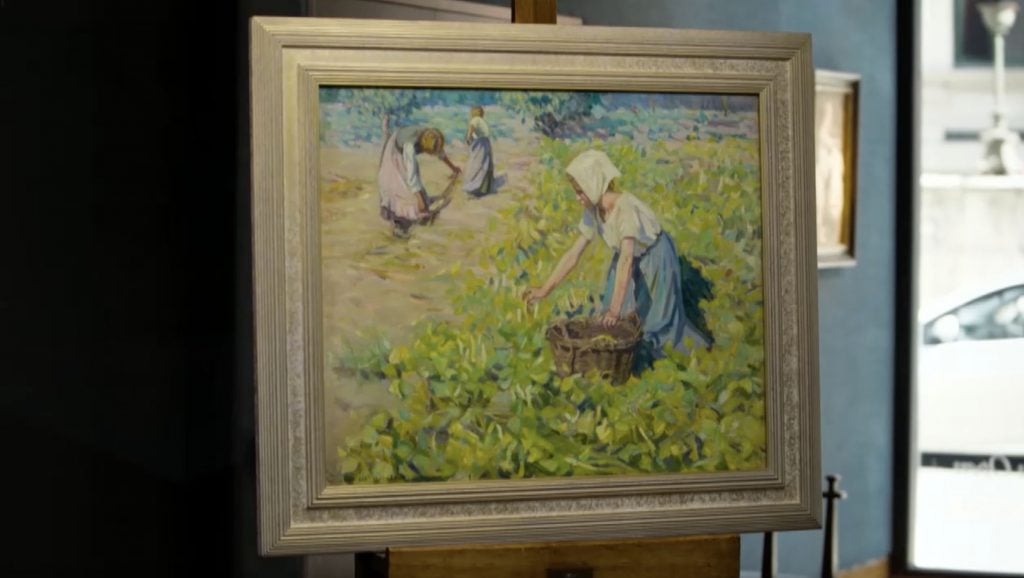
The now-confirmed Helen McNicoll painting. Courtesy of BBC Studios.
McNicoll was known for her landscapes, portraits of women and children, and her Impressionist style which helped to popularize the movement in Canada. The artist had an impressive exhibition history, having shown more than 70 works in the UK and Canada during her lifetime. In 2023, an exhibition was staged at the Art Gallery of Ontario displaying McNicoll’s work alongside pieces by Mary Cassatt, a fellow female Impressionist also known for her paintings of women and children, although the two never met. She is considered one of Canada’s most important female artists.

Host Philip Mould and Art Conservator Alicia Coutts at the Art Gallery of Hamilton in Canada, examining a genuine McNicoll painting. Courtesy of BBC Studios.
Taylor started his quest to confirm the authenticity of the painting after discovering McNicoll’s signature in its bottom left corner after he took the work—purchased under the title Women in the Fields but revealed during the program to actually be called The Bean Harvest —out of its “plastic 1960s frame.” The artwork had been listed by the auction house as “in the style of Helen Galloway McNicoll” online, and on the front of its frame a plastic plaque read “Women of the Fields”, spelling McNicoll’s name incorrectly as “McNicol” and listing the date, impossibly, as ca.1958–43 years after the artist’s death.
Initially, Taylor had contacted the Canadian auction house Heffel about the artwork. but they replied by email saying that they had been unable to locate the work in McNicoll’s catalogue.
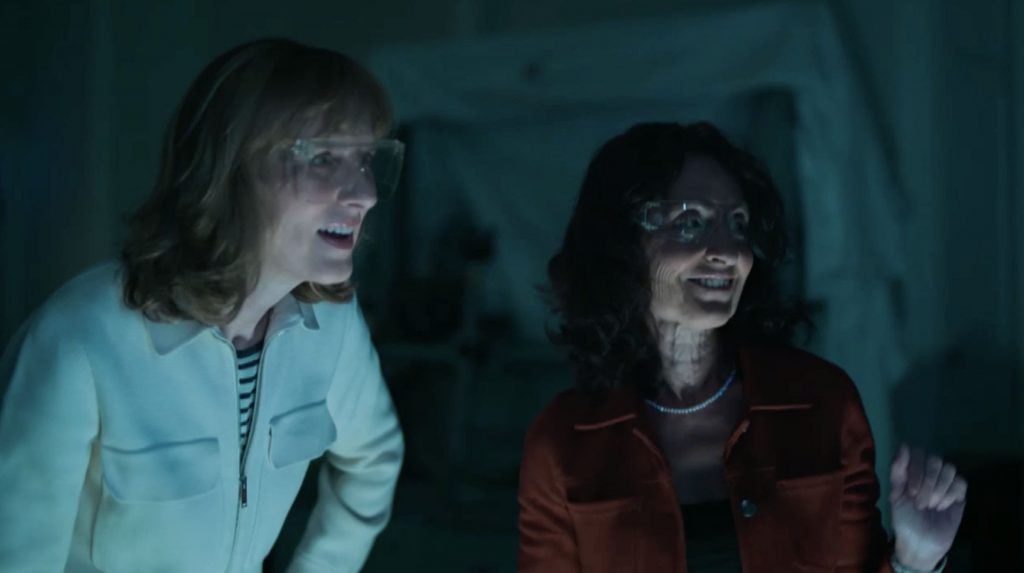
Fiona Bruce and Aviva Burnstock examining the possible Helen McNicoll painting at The Courtauld Institute of Art. Courtesy of BBC Studios.
The Bean Harvest, it was revealed during the program, had been exhibited five times between 1912 and 1913 in Canada but had been missing ever since. The provenance given at auction clarified that the artwork had been passed through the Pine-Coffin family. Norman Pine-Coffin was an artist who had exhibited at London’s Royal Academy shortly before McNicoll, which could suggest that the two artists had met, leading to Pine-Coffin’s ownership of The Bean Harvest. The original frame and support had been disposed of and the painting downsized, potentially in order to fit into a new frame.
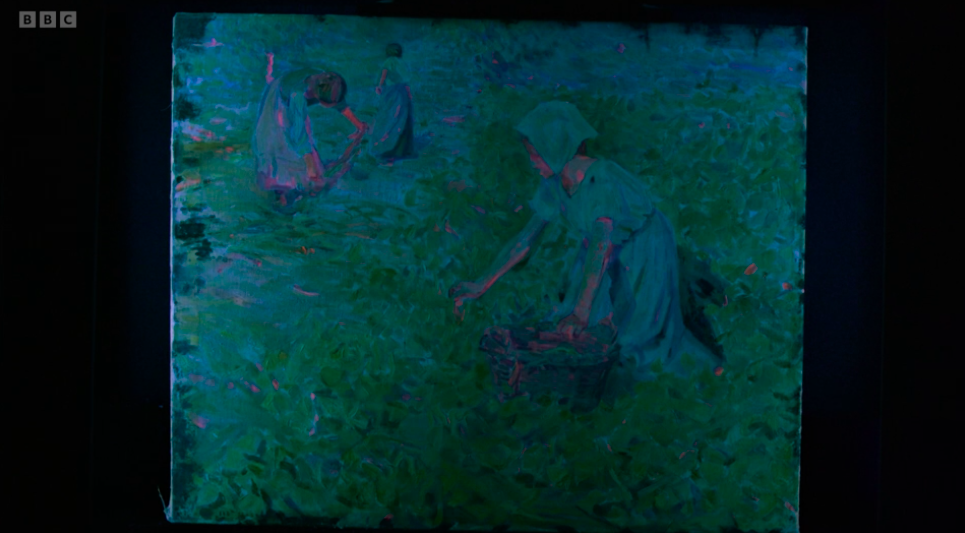
Evidence of the red lake pigment McNicoll used, which shone “hot pink” under UV inspection. Photo courtesy of BBC.
As part of the journey to authenticate the work, experts compared the work to McNicolls’ The Apple Gatherer (ca. 1911) and found that both works used the same canvas and the same red lake pigment which shone “hot pink” under UV inspection.
The program, which has been on-air since 2011 on the BBC and is currently in its 12th series, focuses on one object per episode, working with teams of professionals to confirm the authenticity of artworks sent in by viewers. Over the past 13 years, hosts Fiona Bruce and Philip Mould have helped to rediscover major works by artists including Edgar Degas, Alberto Giacometti, and Henry Moore. Among the fakes have been works said to be by Claude Monet, Rembrandt, and Marc Chagall.
Taylor confirmed that he had “believed in the painting from day one”. He was joined at the end of the program by the Canadian collector and philanthropist Pierre Lassonde who called the work “magnificent” and added that he “wouldn’t mind adding one more piece to my collection”.
When Bruce first saw The Bean Harvest, she said how she loved the “beautiful” piece which she describes as full of “light and movement”. Bruce called McNicoll “a pioneer” and that she was glad the program had “brought her name to wider attention,” admitting that she hadn’t heard of the artist before the show dived in to its research.
The Bean Harvest is being held in a gallery before it goes under the hammer at Sotheby’s London’s Modern British & Irish Evening Auction on November 14, and Taylor is “hopeful that it could achieve a record price.” He mentioned that he would use the money to relocate, potentially to a bungalow, after having recently fallen down the stairs.
This week it was confirmed that Fake or Fortune has been recommissioned for its 13th series.

